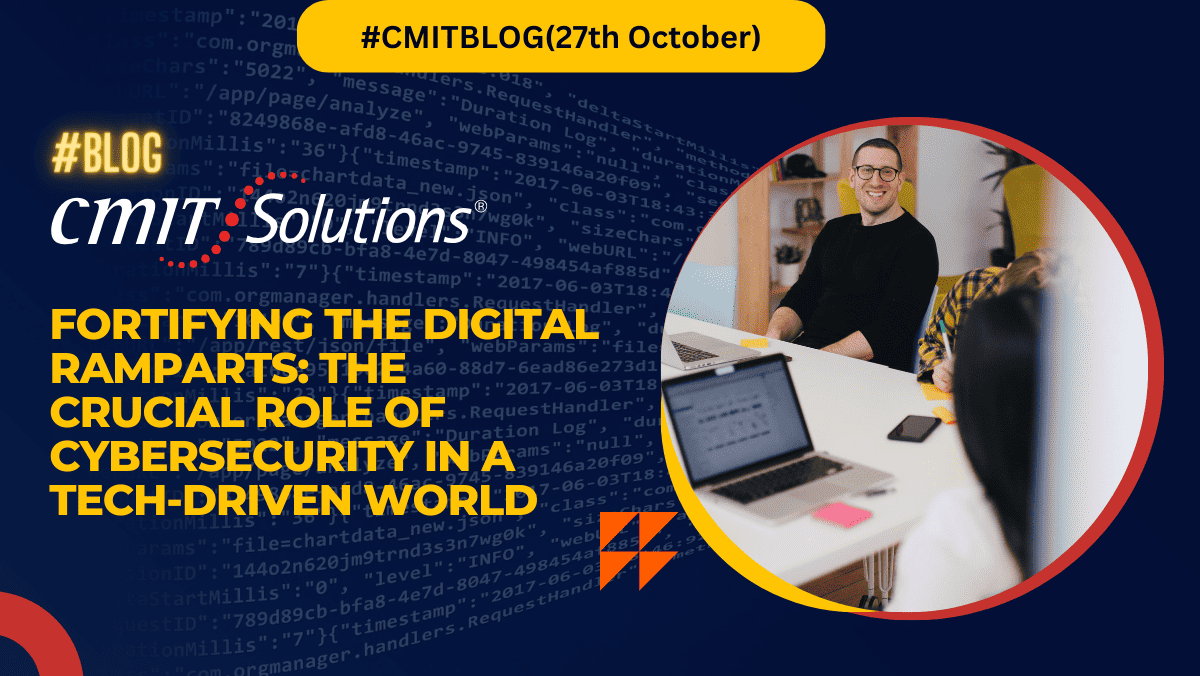Introduction
In our increasingly tech-driven world, the importance of cybersecurity cannot be overstated. As technology advances, so do the threats that seek to exploit vulnerabilities in our digital systems. In this blog post, we will explore the ever-evolving landscape of cybersecurity and how it plays a vital role in safeguarding our data, privacy, and the integrity of our digital infrastructure.
1. The Rising Tide of Cyber Threats
Cyber threats are becoming more sophisticated and prevalent. With the advent of nation-state actors, organized cybercrime syndicates, and lone hackers, the digital world is under constant siege. Cybersecurity measures are essential to defend against threats such as malware, ransomware, phishing attacks, and zero-day vulnerabilities.
2. Protecting Sensitive Data
Data is the lifeblood of the digital age, and it’s essential to protect sensitive information. Cybersecurity measures, including encryption and access controls, safeguard data from unauthorized access and breaches. This is particularly crucial in industries like healthcare, finance, and government, where the stakes are high.
3. The Human Element: User Training and Awareness
The weakest link in any cybersecurity defense is often the human element. Social engineering attacks, where cybercriminals manipulate individuals into divulging confidential information, are on the rise. Educating users about the dangers of such attacks and promoting a culture of cybersecurity awareness is key to prevention.
4. Evolving Threat Detection and Response
Traditional antivirus software is no longer sufficient to combat modern threats. Advanced threat detection tools use machine learning and AI to identify unusual behavior and potential threats in real-time. Rapid incident response is equally vital to minimize damage and prevent data breaches.
5. Secure Development Practices
In the tech world, security should be a consideration from the inception of a project. Secure coding practices, regular security testing, and vulnerability assessments are integral in preventing vulnerabilities in software and applications that could be exploited by cyber attackers.
6. Multi-Factor Authentication (MFA)
MFA is an effective way to protect accounts from unauthorized access. It requires users to provide multiple forms of identification before granting access, enhancing security significantly. Many organizations are implementing MFA to bolster their cybersecurity posture.
7. Regulatory Compliance and Data Privacy
Laws and regulations, such as GDPR and HIPAA, dictate how organizations handle and protect data. Non-compliance can result in severe penalties. Cybersecurity practices must align with these regulations to ensure data privacy and legal adherence.
8. The Internet of Things (IoT) Security
As IoT devices proliferate, they introduce new security challenges. These devices can be vulnerable to attacks if not properly secured. Cybersecurity strategies must encompass the protection of these interconnected devices to prevent potential breaches.
Absolutely, let’s continue to explore the crucial aspects of cybersecurity in the tech-driven world:
-
Insider Threats
While external threats are a significant concern, organizations must also be aware of potential threats from within. Insider threats can come from current or former employees with access to sensitive data. Monitoring user activities and implementing stringent access controls can help mitigate this risk.
-
Patch Management
Software vulnerabilities are a prime target for cybercriminals. Keeping all software, including operating systems and applications, up to date with the latest security patches is essential. Failure to do so can leave systems exposed to known exploits.
-
Cybersecurity Education and Training
In the ever-evolving field of cybersecurity, continuous education and training are critical. Cybersecurity professionals must stay current with the latest threats and trends, while all employees should receive training on best practices for online safety and data protection.
-
Cloud Security
With the shift towards cloud computing, protecting data in the cloud is paramount. Cloud security measures, including data encryption, access controls, and comprehensive security policies, help ensure the safety of data stored and processed in the cloud.
-
Threat Intelligence
Cybersecurity experts use threat intelligence to stay one step ahead of cyber threats. This involves gathering and analyzing data on emerging threats, vulnerabilities, and cybercriminal tactics. By understanding the threat landscape, organizations can proactively defend against potential attacks.
-
Red Team vs. Blue Team
In a proactive approach to security, organizations often employ red teams (ethical hackers) to test their defenses by attempting to breach systems, while blue teams (defenders) work to detect and prevent these attacks. This “battle” helps identify vulnerabilities and improve cybersecurity measures.
-
Disaster Recovery and Business Continuity
Planning for the worst-case scenario is a fundamental aspect of cybersecurity. Having a well-defined disaster recovery and business continuity plan ensures that, in the event of a breach or data loss, an organization can recover its systems and continue operations with minimal disruption.
-
Collaboration and Information Sharing
The cybersecurity community often relies on collaboration and information sharing. Public and private organizations share threat intelligence and best practices to collectively improve global cybersecurity efforts. This collaborative approach strengthens the resilience of digital infrastructures.
Conclusion
Cybersecurity is an ongoing battle in our tech-driven world. The threats are relentless, but with robust cybersecurity practices, continuous education, and the right tools and strategies in place, organizations can effectively protect their digital assets and sensitive data. As technology continues to advance, the importance of cybersecurity will only grow, making it an indispensable part of the tech industry and our connected world. It is a shared responsibility to ensure the integrity and security of the digital ecosystem.





